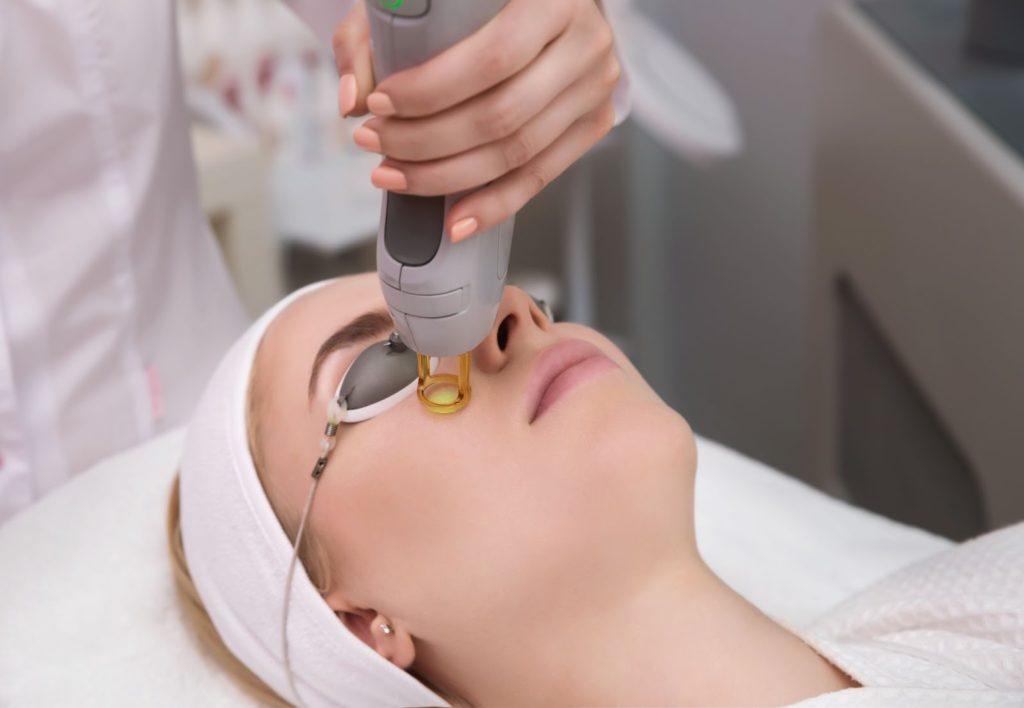Battling dry eye can feel like an endless struggle, and it leaves many people searching constantly for a solution. Amidst the plethora of remedies and treatments available, one option that has recently gained increasing attention is IPL (Intense Pulsed Light) treatment.
This approach, originally developed for dermatological purposes, has been adapted to address the underlying causes of chronic dry eye syndrome.
Unlike temporary solutions such as eye drops or warm compresses, IPL offers a more long-term approach to managing the symptoms of dry eye. The effects of this treatment have been reported to last for up to 9 months, and sometimes, even longer with subsequent treatments.
What Is IPL Dry Eye Treatment?
IPL Dry Eye Treatment uses Intense Pulsed Light technology to treat the root causes of dry eye. Specifically, IPL has proven to be a highly effective treatment for meibomian gland dysfunction (MGD).
Understanding Meibomian Gland Dysfunction
The meibomian glands, located in the eyelids, produce the oily layer of the tear film. When these glands become blocked or dysfunctional, the result is an unstable tear film and evaporative dry eye. IPL targets these glands, helping to restore normal function.
The Science Behind IPL
IPL emits a broad spectrum of light wavelengths that penetrate the skin and target the blood vessels. This reduces the inflammation that contributes to MGD, allowing the meibomian glands to produce the oils necessary for a stable tear film.
Why IPL for Dry Eyes?
Unlike traditional treatments like artificial tears or warm compresses that provide temporary relief, IPL addresses the underlying causes of dry eye. This makes it a promising option for those seeking a long-term solution.
How IPL Treatment Works
IPL treatment for dry eye involves a series of sessions administered by a trained professional. Here’s a step-by-step look at the process:
Consultation and Diagnosis
Before starting IPL treatment, you’ll undergo a thorough eye examination to determine the severity of your dry eye condition and assess whether IPL is the right choice for you.
The Treatment Sessions
During the session, a cooling gel is applied to the area around your eyes. The IPL device then emits pulses of light, which penetrate the skin and target the meibomian glands. Each session typically lasts between 10 to 15 minutes.
Number of Sessions Required
Most patients require a series of 4 to 6 sessions, spaced about 2 to 4 weeks apart. The number of sessions may vary, depending on the severity of your condition and your response to the treatment.
Benefits of IPL for Dry Eyes
IPL offers several benefits that make it an attractive option for treating dry eyes:
Long-Lasting Relief
One of the primary benefits of IPL is its potential to provide long-lasting relief from dry eye symptoms. Many patients experience significant improvement after completing the recommended number of sessions.
Non-Invasive Procedure
IPL is a non-invasive treatment, meaning there are no incisions or injections involved. This reduces the risk of complications and allows for a quicker recovery compared to surgical options.
Multi-Faceted Approach
IPL not only addresses the inflammation that causes MGD, but also improves the overall health of the ocular surface.
How Long Will IPL Treatment Effects Last?
A common question among patients is how long the effects of IPL treatment last. While individual results may vary, here’s what you can generally expect:
Immediate Improvement
Many patients report noticeable relief after the first few sessions. This can include reduced dryness, less irritation, and improved vision quality.
Lasting Results
The effects of IPL can last for about 9 months. Regular maintenance sessions may be needed to sustain the benefits, especially for those with chronic dry eye conditions.
Factors Influencing Longevity
The duration of relief can be influenced by several factors, including the severity of your dry eye condition, adherence to post-treatment care, and lifestyle habits.
What to Expect During IPL Treatment
Preparation
Before the treatment, you’ll need to remove any makeup or contact lenses. Your optometrist will provide goggles to protect your eyes from the IPL light.
The Treatment Process
During the session, you might feel a warm sensation as the light pulses are applied. Most patients find the procedure comfortable, though some may experience mild discomfort.
Post-Treatment Sensations
After the treatment, you might notice slight redness or swelling around the treated area. These side effects are usually mild and subside within a few hours.
Comparing IPL with Other Dry Eye Treatments
IPL is one of several treatment options for dry eyes. Here’s how it compares to other popular methods:
Artificial Tears
While artificial tears provide immediate relief, they do not address the underlying causes of dry eye. IPL offers a longer-term solution by targeting meibomian gland dysfunction.
Warm Compresses
Warm compresses can help alleviate dry eye symptoms by loosening the oils in the meibomian glands. However, the effects are often short-lived compared to the lasting results of IPL.
Prescription Medications
Medications like cyclosporine (Restasis) and lifitegrast (Xiidra) can improve tear production and reduce inflammation. However, they may have side effects and require long-term use. IPL offers a non-medical alternative with fewer side effects.
Ready to Try IPL Treatment for Dry Eyes?
IPL Dry Eye Treatment offers a promising solution for those suffering from chronic dry eye. The potential for long-lasting relief, combined with the non-invasive nature of IPL, makes it an attractive option for many.If you’re tired of dealing with dry eyes and want to explore the benefits of IPL treatment, book an appointment with Bayside Eye Care today.



